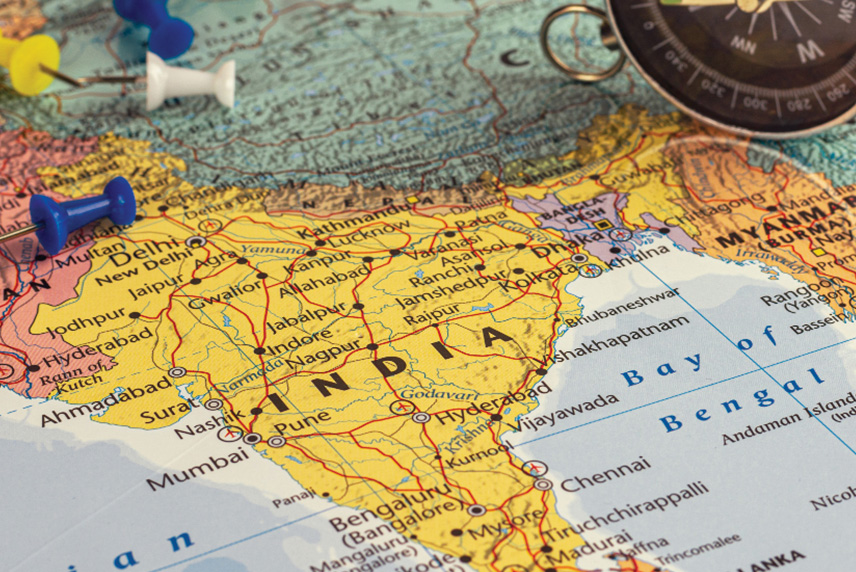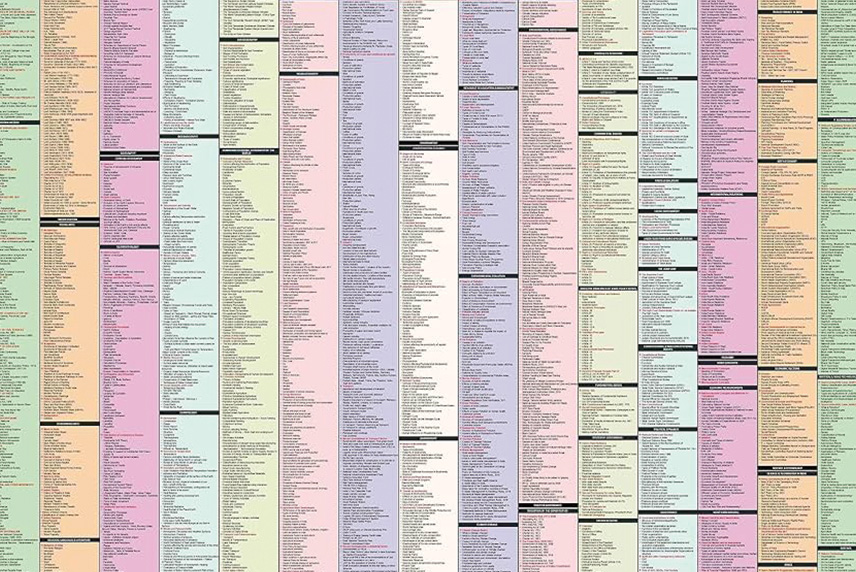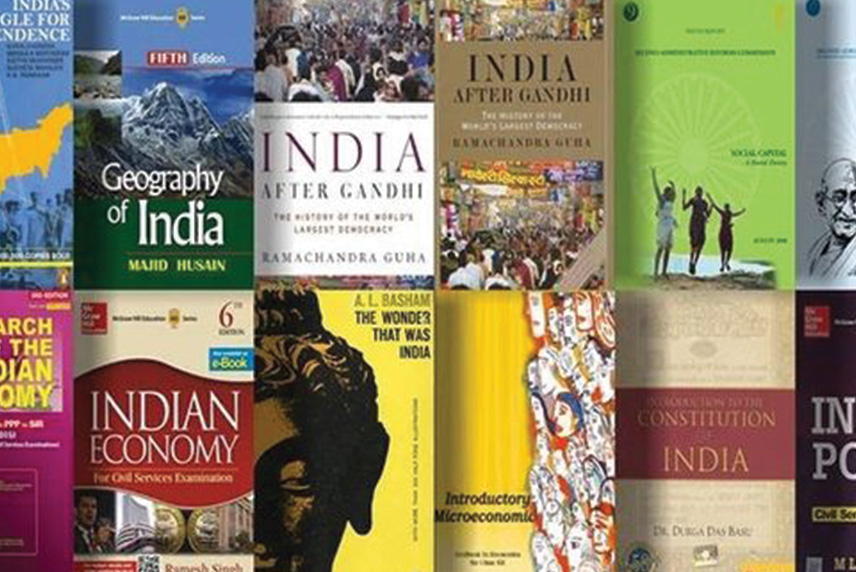Geography is no doubt one of the most sought after and popular Optionals in UPS CSE for various reasons enlisted below;
For Arts & Commerce its a natural choice, but even if you are from science stream,engineer or doctor then geography is the best optional, even if you have studied science upto 12 th class then you can safely opt for Geography optional. Having geography as your optional you have following advantages.
-
It is scientific so once you understand the concept then you can write answer in your own words …flowery language isn't required like other humanity subjects.
-
It covers at least 30 questions out of 100 in prelims (ecology& environment is also in geography).
-
In mains GS paper 1 it covers 100 marks and in GS paper 3 it covers 200 marks.
-
Paper 1, of geography optional is concept based and paper 2 of geography optional is applied that is it deals with Geography of India, where you need to use the concepts of paper one along with current developments.
-
Geography is no doubt one of the most sought after and popular Optionals in UPS CSE for various reasons enlisted below;
-
For Arts & Commerce its a natural choice, but even if you are from science stream,engineer or doctor then geography is the best optional, even if you have studied science upto 12 th class then you can safely opt for Geography optional. Having geography as your optional you have following advantages.
-
It is scientific so once you understand the concept then you can write answer in your own words …flowery language isn't required like other humanity subjects.
-
It covers at least 30 questions out of 100 in prelims (ecology& environment is also in geography).
-
In mains GS paper 1 it covers 100 marks and in GS paper 3 it covers 200 marks.
-
Paper 1, of geography optional is concept based and paper 2 of geography optional is applied that is it deals with Geography of India, where you need to use the concepts of paper one along with current developments.
Geography plan in Sankalp IAS Forum-is one of the best strategy for Geography optional-
About the initiative:
We already have the detailed study plans for various components of the syllabus in terms of syllabus, approach, imperatives, resources etc. The strategy would be updated regularly to cover all the remaining portions of the syllabus.
Kindly note that during classroom sessions, although we shall be providing strategies for individual components of the syllabus and in fact have already provided for some of them, the representative strategy for Physical Geography is Climatology. Therefore, through the strategy of Climatology first. But in no case avoid the detailed strategies of other portions.
The relevant portions of Paper I and II have been clubbed to ease your efforts. Geography optional can’t be understood without seamless integration of topics from different components of the syllabus. For example, you can’t understand desertification without having fair idea of climatic regions of the world. Similarly, you are expected to apply the concepts of Paper I into Paper II and vice versa. There are certain topics which are repeated e.g agro and social forestry, desertification, disasters etc. We have thus integrated such topics in the plan. It will definitely give you a better and comprehensive idea of the subject. Most importantly, this approach saves a lot of your time and effort.
Based on this strategy and your efforts, we shall be posting a total of 5 questions daily. These questions shall be in the following format.
-
Question 1. 5 map entries asking their location and a brief descriptio
-
Question 2. Terminologies related to the chapter/topic mentioned in the 100 day plan
-
Question 3. Blue blooded Geography theory question to check your conceptual clarity
-
Question 4. Application based descriptive/ essay type question
-
Question 5. Reserved; may be of any type depending upon the requirement of the topic
Answers will be reviewed along with feedback
-
Brief synopsis in the form of directives will be provided at the end of the day.
-
Mini tests will be conducted ever 15 days. This means that you shall have a minimum of 6 mini tests during this period.
-
10 days have been earmarked for revision purposes. During these 10 days, number of questions shall be increased.
-
After the completion of 100 days, full mock test for both the papers will be conducted.
-
Periodically SIF will come up with articles for important and tricky topics and also about improving the quality of answers.
Now about the syllabus and book list for Geography:
The prestigious UPSC civil services exam consists of 3 stages - Prelims, Mains and Interview.
-
Amongst them Mains is the most crucial stage, as in your final selection depends upon mains (Total marks: 1750 marks) and interview marks (Total marks: 275 marks), while prelims is merely of qualifying nature.
-
Now with respect to mains, there are 9 papers, having two papers of optional subject - signifying a weightage of 500 marks ( Paper 1 and Paper 2- 250 marks each). Though weightage seems to be less, the marks one can fetch in the optional subject makes it most important.
-
This means that with a smart strategy one can achieve 60-70 % Marks ( 300-350 marks out of 500) while for other GS papers getting close to 50% is itself a mammoth task.
-
Therefore choosing a good optional subject is a sine qua non for clearing UPSC exam.
Decoding geography as an Optional:
The optional consists of two papers -
-
Paper I -PRINCIPLES OF GEOGRAPHY
-
Paper-II -GEOGRAPHY OF INDIA
PAPER I
PRINCIPLES OF GEOGRAPHY
Physical Geography :
Geomorphology: Factors controlling landform development; endogenetic and exogenetic forces; Origin and evolution of the earth’s crusts; Fundamentals of geomagnetism; Physical conditions of the earth’s interior; Geosynclines; Continental drift; Isostasy; Plate tectonics; Recent views on mountain building; Volcanicity; Earthquakes and Tsunamis; Concepts of geomorphic cycles and Landscape development; Denudation chronology; Channel morphology; Erosion surfaces; Slope development; Applied Geomorphology; Geomorphology, economic geology and environment.
Climatology: Temperature and pressure belts of the world; Heat budget of the earth; Atmospheric circulation; Atmospheric stability and instability. Planetary and local winds; Monsoons and jet streams; Air masses and fronto; Temperate and tropical cyclones; Types and distribution of precipitation; Weather and Climate; Koppen’s Thornthwaite’s and Trewar Tha’s classification of world climate; Hydrological cycle; Global climatic change, and role and response of man in climatic changes Applied climatology and Urban climate.
Oceanography: Bottom topography of the Atlantic, Indian and Pacific Oceans; Temperature and salinity of the oceans; Heat and salt budgets, Ocean deposits; Waves, currents and tides; Marine resources; biotic, mineral and energy resources; Coral reefs coral bleaching; Sea-level changes; Law of the sea and marine pollution.
Biogeography: Genesis of soils; Classification and distribution of soils; Soil profile; Soil erosion, Degrada-tion and conservation; Factors influencing world distribution of plants and animals; Problems of deforestation and conservation measures; Social forestry, agro-forestry; Wildlife; Major gene pool centres.
Environmental Geography: Principle ecology; Human ecological adaptations; Influence of man on ecology and environment; Global and regional ecological changes and imbalances; Ecosystem their management and conservation; Environmental degradation, management and conservation; Biodiversity and sustainable development; Environmental policy; Environmental hazards and remedial measures; Environmental education and legislation.
Human Geography :
Perspectives in Human Geography: Areal differentiation; Regional synthesis; Dichotomy and dualism; Environmentalism; Quantitative revolution and locational analysis; Radical, behavioural, human and welfare approaches; Languages, religions and secularisation; Cultural regions of the world; Human development index.
Economic Geography: World economic development: measurement and problems; World resources and their distribution; Energy crisis; the limits to growth; World agriculture: typology of agricultural regions; Agricultural inputs and productivity; Food and nutrition problems; Food security; famine: causes, effects and remedies; World industries: location patterns and problems; Patterns of world trade.
Population and Settlement Geography: Growth and distribution of world population; Demographic attributes; Causes and consequences of migration; Concepts of over-under-and optimum population; Population theories, world population problems and policies, Social well-being and quality of life; Population as social capital. Types and patterns of rural settlements; Environmental issues in rural settlements; Hierarchy of urban settlements; Urban morphology; Concept of primate city and rank-size rule; Functional classification of towns; Sphere of urban influence; Rural-urban fringe; Satellite towns; Problems and remedies of urbanization; Sustainable development of cities.
Regional Planning: Concept of a region; Types of regions and methods of regionalisation; Growth centres and growth poles; Regional imbalances; Regional development strategies; Environmental issues in regional planning; Planning for sustainable development. 5. Models, Theories and Laws in Human Geography : System analysis in Human geography; Malthusian, Marxian and demographic transition models; Central Place theories of Christaller and Losch; Perroux and Boudeville; Von Thunen’s model of agricultural location; Weber’s model of industrial location; Ostov’s model of stages of growth. Heart-land and Rimland theories; Laws of international boundaries and frontiers.
PAPER-II
GEOGRAPHY OF INDIA
Physical Setting: Space relationship of India with neighbouring countries; Structure and relief; Drainage system and watersheds; Physiographic regions; Mechanism of Indian monsoons and rainfall patterns; Tropical cyclones and western disturbances; Floods and droughts; Climatic regions; Natural vegetation, Soil types and their distributions.
Resources: Land, surface and groundwater, energy, minerals, biotic and marine resources, Forest and wildlife resources and their conservation; Energy crisis.
Agriculture: Infrastructure: irrigation, seeds, fertilizers, power; Institutional factors; land holdings, land tenure and land reforms; Cropping pattern, agricultural productivity, agricultural intensity, crop combination, land capability; Agro and social-forestry; Green revolution and its socio-economic and ecological implications; Significance of dry farming; Livestock resources and white revolution; Aqua-culture; Sericulture, Agriculture and poultry; Agricultural regionalisation; Agro-climatic zones; Agro-ecological regions.
Industry: Evolution of industries; Locational factors of cotton, jute, textile, iron and steel, aluminium, fertiliser, paper, chemical and pharmaceutical, automobile, cottage and ago-based industries; Industrial houses and complexes including public sector underkings; Industrial regionalisation; New industrial policy; Multinationals and liberalisation; Special Economic Zones; Tourism including ecotourism.
Transport, Communication and Trade: Road, railway, waterway, airway and pipeline networks and their complementary roles in regional development; Growing importance of ports on national and foreign trade; Trade balance; Trade Policy; Export processing zones; Developments in communication and information technology and their impacts on economy and society; Indian space programme.
Cultural Setting: Historical Perspective of Indian Society; Racial linguistic and ethnic diversities; religious minorities; Major tribes, tribal areas and their problems; Cultural regions; Growth, distribution and density of population; Demographic attributes: sex-ratio, age structure, literacy rate, work-force, dependency ratio, longevity; migration (inter-regional, intraregional and international) and associated problems; Population problems and policies; Health indicators.
Settlements: Types, patterns and morphology of rural settlements; Urban developments; Morphology of Indian cities; Functional classification of Indian cities; Conurbations and metropolitan regions; Urban sprawl; Slums and associated problems; Town planning; Problems of urbanisation and remedies.
Regional Development and Planning: Experience of regional planning in India; Five Year Plans; Integrated rural development programmes; Panchayati Raj and decentralized planning; Command area development; Watershed management; Planning for backward area, desert, drought-prone, hill tribal area development; Multi-level planning; Regional planning and development of island territories.
Political Aspects: Geographical basis of Indian federalism; State reorganisation; Emergence of new states; Regional consciousness and inter-state issues; International boundary of India and related issues; Cross-border terrorism; India’s role in world affairs; Geopolitics of South Asia and Indian Ocean realm.
Contemporary Issues: Ecological issues: Environmental hazards: landslides, earthquakes, Tsunamis, floods and droughts, epidemics; Issues related to environmental pollution; Changes in patterns of land use; Principles of environmental impact assessment and environmental management; Population explosion and food security; Environmental degradation; Deforestation, desertification and soil erosion; Problems of agrarian and industrial unrest; Regional disparities in economic development; Concept of sustainable growth and development; Environmental awareness; Linkage of rivers; Globalisation and Indian economy.
NOTE: Candidates will be required to answer one compulsory map question pertinent to subjects covered by this paper.
Sources to Refer:
Paper 1
- Physical Geography by Savinder Singh
-
Geomorphology by Savinder Singh
-
Climatology by D S Lal
-
Environmental Geography by Savinder Singh
-
Evolution of Geographical Thought by Majid Husain
-
Models in Geography by Majid Husain
-
Human Geography by Majid Hussain
-
GC Leong
Paper-II
- India: A Comprehensive Geography by D R Khullar
-
NCERTs
-
Orient Blackswan/Oxford Atlas
-
Map Entries in Geography – K Siddhartha
-
Apart from the above current affairs holds great importance especially in Paper 2 of the geography optional. For preparing these topics there is a need to keep an eye on topics relevant to our exam from various newspapers such as The Hindu, Indian Express, Down to Earth etc. RSTV programmes like Big Picture on a relevant topic such as rural development can also be helpful.




